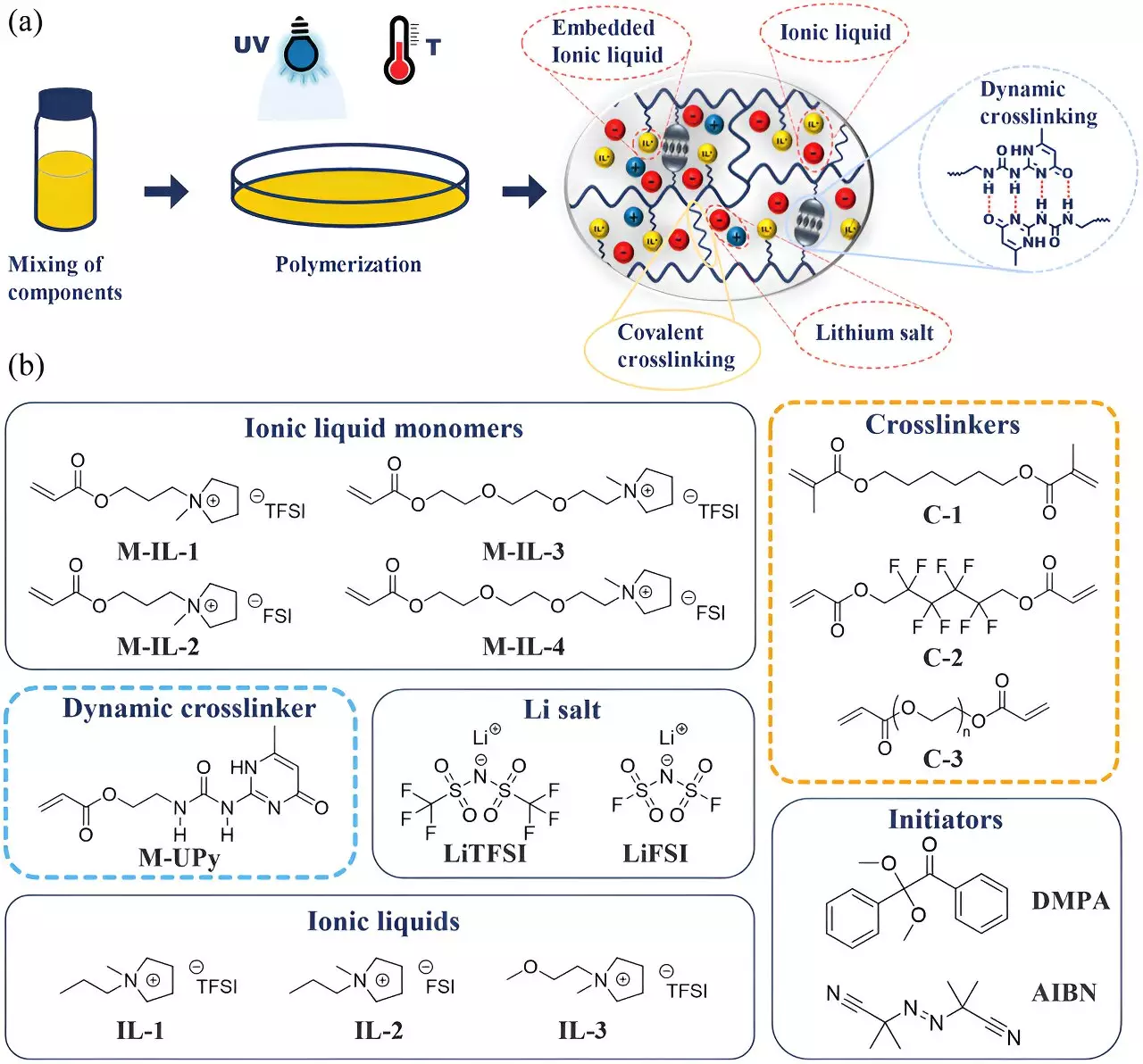The race for enhanced lithium-ion batteries has taken an exciting turn with the emergence of a novel gel developed by chemists at Martin Luther University Halle-Wittenberg (MLU). This groundbreaking gel promises not only to reinforce the safety profile of lithium-ion batteries but also to augment their potency. The core function of this gel is to address the pressing issue of flammable electrolyte leakage, a significant risk in conventional battery designs. As batteries are increasingly used in sensitive applications ranging from consumer electronics to electric vehicles, the importance of achieving a balance between performance and safety has never been more critical.
A Closer Look at the Gel’s Composition
At its essence, the gel is a polymer-based substance that creates a synergistic relationship with lithium ions. Professor Wolfgang Binder, the leading figure in MLU’s Macromolecular Chemistry Research Group, emphasizes the gel’s dual capabilities: it maintains high ionic conductivity akin to liquids while providing the thermal stability and robustness characteristic of solid polymers. This innovation is particularly noteworthy as traditional liquid electrolytes have long plagued battery technology with risks of combustion and structural failure upon damage. By binding the electrolyte within a gel matrix, this new approach ensures that while the ions can freely circulate between the electrodes, the inherent risks associated with leakage are mitigated effectively.
The road to developing such gels was not without challenges. Conventional lithium-ion batteries typically rely on liquid electrolytes to form stabilizing layers on electrodes during initial charging—a critical factor for battery efficiency and lifespan. Dr. Anja Marinow, a chemist at MLU, elucidates that this posed a conundrum for the researchers. They needed to create a gel-based electrolyte that could replicate this essential stabilization process. The solution was ingeniously devised through the integration of ionic scaffolding into the polymer’s molecular structure. This innovative framework supports the formation of the necessary stabilizing layers while retaining the gel’s liquid-like behavior.
Preliminary laboratory tests indicate that this innovative gel electrolyte significantly boosts the safety and longevity of lithium-ion cells. As Professor Binder notes, traditional lithium-ion cells face challenges at voltages exceeding 3.6, where electrolyte stability becomes increasingly precarious. However, their newly developed gel electrolytes showcase remarkable stability, even at voltages above 5 volts. This breakthrough not only opens the door to higher performance thresholds but also translates into widespread implications for battery applications across various sectors.
As the world pivots towards more sustainable practices, the environmental implications of battery production and disposal cannot be overlooked. The gel technology developed by MLU researchers takes sustainability into account, facilitating recycling at the end of the battery’s life cycle. Nevertheless, further long-term studies are imperative to ensure reliability and performance before this gel can be scaled up for industrial use.
The development of this gel is part of a broader initiative, the “BAT4EVER” project, which brings together universities and research organizations across Europe, including Belgium, Italy, Spain, and Turkey. It reflects a collaborative effort to push the boundaries of current battery technology while embedding sustainability in its core. In conjunction with the establishment of the “European Center for Just Transition Research and Impact-Driven Transfer (JTC)” at MLU, the focus will remain on creating research-led solutions that can facilitate a transition towards a circular economy and social innovation.
The innovative gel developed by chemists at MLU represents a formidable leap forward in the quest to enhance lithium-ion battery performance and safety. As researchers delve deeper into this technology, the promise of more reliable, efficient, and environmentally friendly batteries is on the horizon. This breakthrough highlights the convergence of scientific inquiry and practical application, paving the way for future advancements in energy storage that could reshape industries and bolster the transition to sustainable energy solutions.

